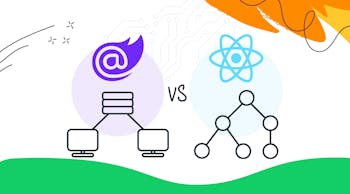How to Prevent Mobile App Failure: From Start to Finish
With hundreds, if not thousands, of mobile apps launching every single day that solve a variety of problems and support a wide range of businesses, creating a mobile app seems like a venture every business should undergo. While it’s easy to say the words “let’s create a mobile app”, taking on the process of strategizing, researching, developing, and marketing the app can be quite challenging.
While building a mobile app is not a panacea for every business, with the right planning, it can certainly be an asset. Considering building a mobile app? Make sure that you’re not faltering on the following planning steps.
1. Research
As we hinted at above, a mobile app is not for every business. To validate if your business could benefit from a mobile app, the research portion of this process is critical. Before spending strategizing, development, or marketing resources, spend time researching the following and ask yourself these questions:
- What are your competitors doing?
- Are the features you want your app to have feasible to create?
- Will this app benefit your customers? Or be too cumbersome?
- Are the goals of your app satisfied with another app on the market?
- Is your app solving a real-world problem? Or is this a problem better solved with another solution?
Once you’ve answered these questions you have better grounds for moving forward with developing your dream app. Without partaking in any of this preliminary research, you may find your app failing because there isn’t a compelling need for it.
2. Planning
The Planning Step is rather inclusive of several things you’ll need to nail down before progressing to app design and development. You need to:
- Determine your goals
- Outline your ideas
- Wireframe your app
Determine Your Goals
This shouldn’t take you too long to flesh out because if you’ve already come this far, you likely have your goals in mind already. The overarching goal of your app should address what needs it is filling, as well as how it fits into your business’ goals. To appease any financial-minded partners, you may need to come up with revenue and conversion-driven goals as well.
Outline Your Ideas
This is your team’s time to outline all their ideas for functions they want the app to have, the design of the app, and other UX considerations. You will likely go through several culling periods of the ideas that will leave you with a unified list to present to the development team.
Wireframe Your App
This can be as simple or as complex as you want it to be; the wireframe of your app is your internal team’s idea for how you’d like it to look. You can then show your wireframe to the designers and developers, along with your list of ideas, so they can get started on the dirty work.
Whenever mobile app creators skip or skimp on the planning step, the development process will take an extended amount of time. There will be more back and forth of questions and answers between the development team and unless you have your goals set from the beginning, the finalized product may not be exactly what you wanted or needed.
3. Budget-Setting
As with any project, before you get started you need to set a budget and ensure that all parties involved understand it must be stuck to. Now we’re not just talking about a high-level number either, but a drilled down budget with specifics for each part of the project. For example, you’ll want a development budget, marketing budget, and user-testing budget.
Needless to say, not sticking to the budget is a huge reason that apps fail. Even if the app launches successfully, if you’re over budget, or had to cut back on features to stay in budget, you haven’t achieved your original goal, and for many that can be considered a failure.
4. Designing and Developing
Now here is where we get into the fun stuff: designing and developing your app! You do have a big decision to make at this point - who to hire for the design and development of your mobile app. Vetting a variety of companies through an understanding of their processes, project management style, and ability to partner seamlessly with your team is vital to the success of the project. For one of the best options in the biz, consider Inventive.
Besides securing a partnership with the perfect design and development company, there are several potential pitfalls you have to be aware of at this stage that could cause your app to fail.
- Designing a user-interface that is too complicated for users to navigate
- Creating an app that is not compatible with a variety of devices
- Adding too many or too few features that make the app over or underwhelming
While a majority of these potential failures should have been addressed in your goal and planning stages, this is the time to double-check execution. Undergo continual user-testing throughout the development process and take that feedback to heart - use it to modify the app to make it as useful as possible to your target market. One of the best ways to test this is to ask your software vendor about creating a clickable prototype which can then be used to gather user feedback and lure investors into your project.
Post-Launch Failures
Hopefully, at this point you have avoided the plethora of potential setbacks that could have caused your app to fail. However, you still have to contend with the market launch of your app, ongoing marketing, and app maintenance to deal with bugs or make improvements. You can’t just drop your mobile app off and expect to never have to touch it again. Prioritize regular updates and pay attention to reviews and feedback you receive to continue to improve the user experience your app provides.
You’re now well aware of how to prevent your mobile app from failing, but you still have a lot of work to do. For a true partner in your app-building process, choose our team of custom software developers, app designers, project managers, and marketers to help see your project through. Contact us today for a consultation!









